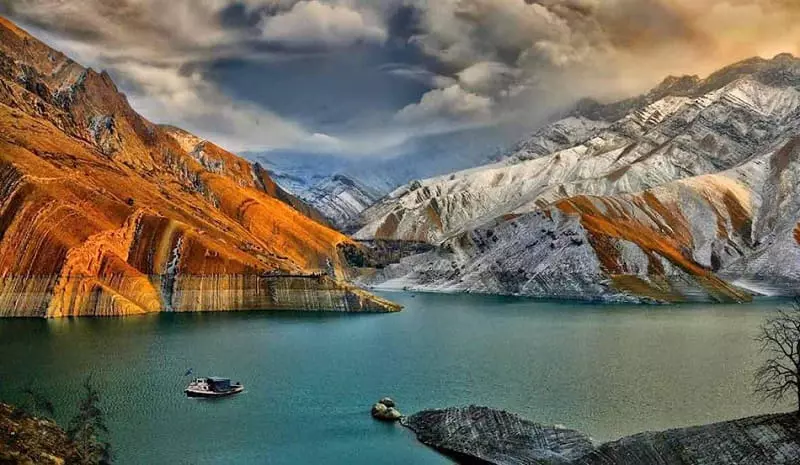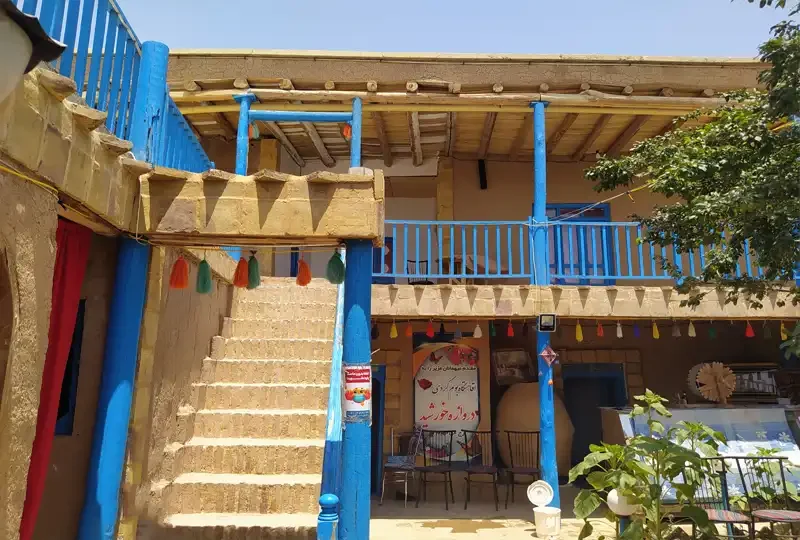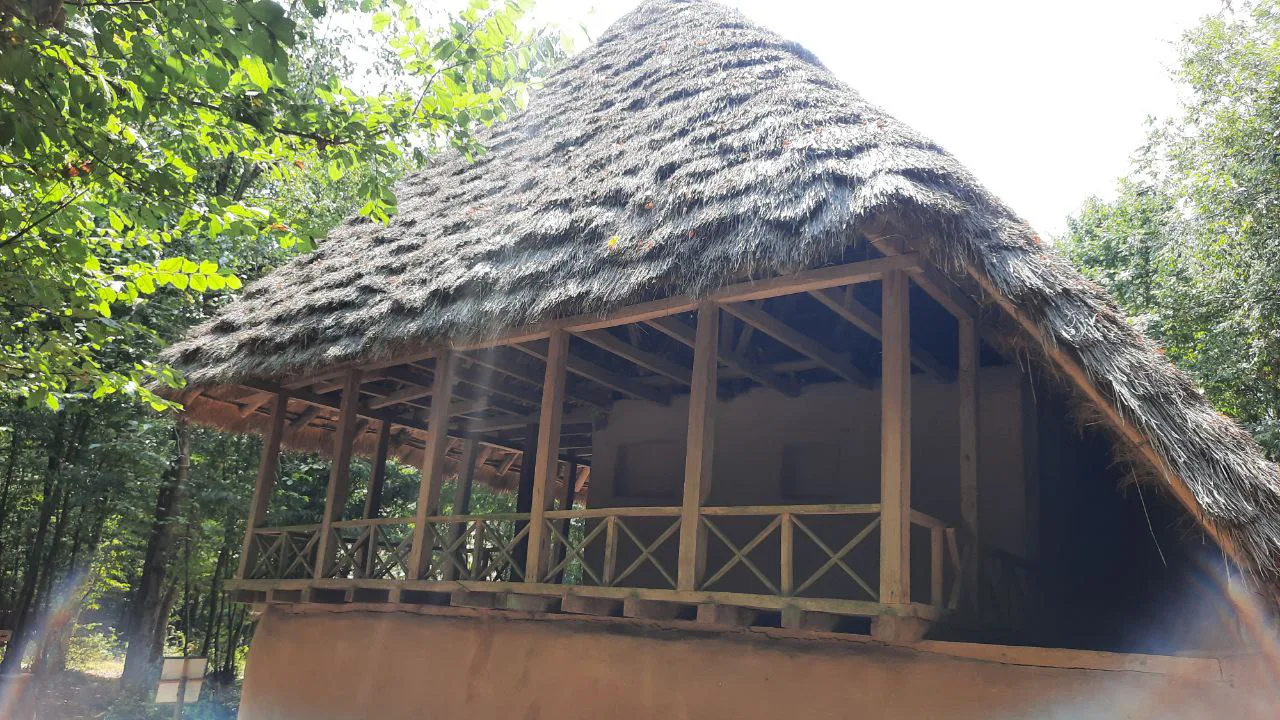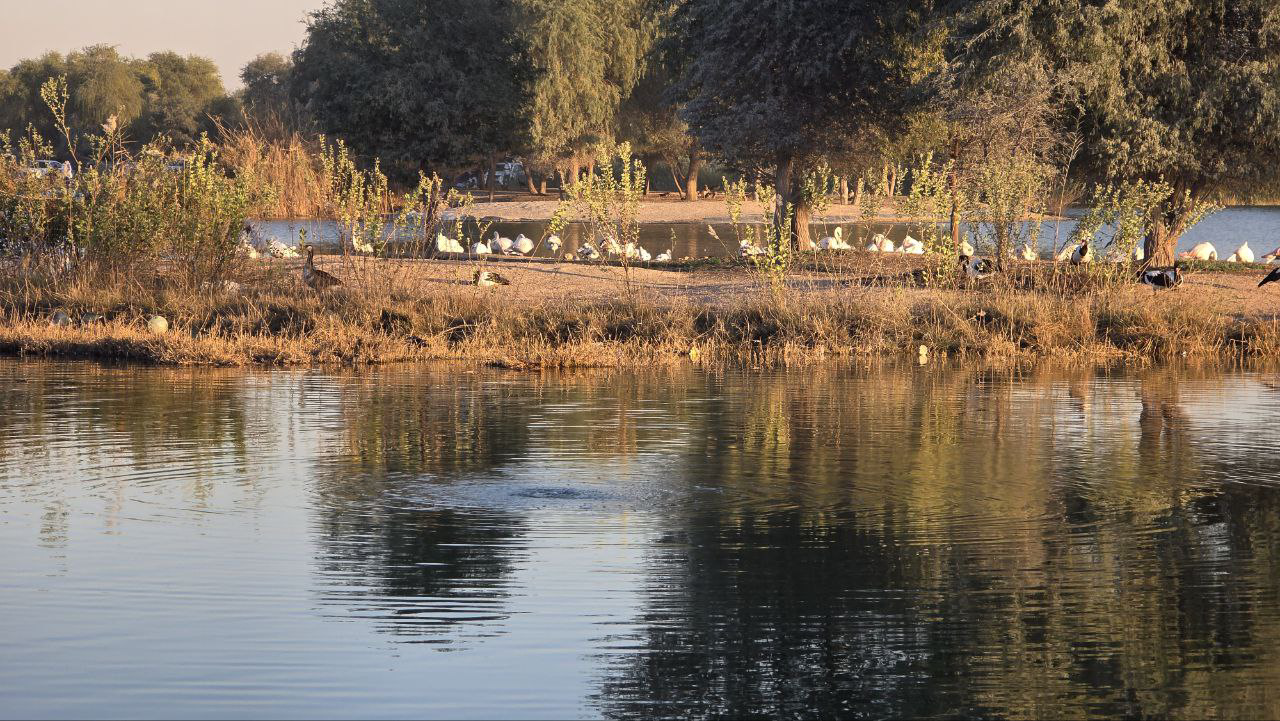Introduction of 30 Beautiful and Charming Villages in Iran
In this article, join Gulf City Pedia as we Introduction of 30 Beautiful and Charming Villages in Iran .
1.Hesar Village, Dilam:
Hesar Village is located in the southern district of Liravi in the Dilam county, accommodating a population of around one thousand people.
Historical attractions in this village include Agha Khan Castle from the Qajar period and the ruins of Siniz, an ancient port dating back to the late Sassanian era.
Additionally, the village boasts a tourist complex where local customs are practiced. The natural attractions of Hesar Village include orchards, pristine beaches, and the Dileh Dam.

2.Kazaj Village:
Kazaj Village is among the 12 tourist destination villages in Ardabil and one of the 10 villages with valuable traditional architectural structures in the country. Its name is derived from the word “kazeh,” meaning wooden handcraft. Some dictionaries also interpret Kazaj as a grape garden.
The village features stepped architecture. What sets this village apart is not only its unique architecture but also the residents’ commitment to preserving this type of architecture and emphasizing the protection of traditions, customs, and the culture of the region’s past.
Kazaj Tourist Village is situated 15 kilometers northwest of Hashjin in Ardabil province. The combination of traditional structures, distinctive residential architecture, mountainous location, the beauty of nature, and the Qizil Uzan River flowing right through the village’s orchards has transformed Kazaj into one of Ardabil province’s tourist attractions. The primary occupations of the locals include gardening, animal husbandry, and agriculture. The distance from Khalkhal is 57 kilometers, and from Hashjin, it is 17 kilometers. The Qizil Uzan River passes just 1 kilometer west of the village, and the houses in the village resemble the historical and tourist town of Masouleh. What makes this village significant is not only its architecture but also the locals’ interest in preserving the traditions, customs, and culture of this region’s past.
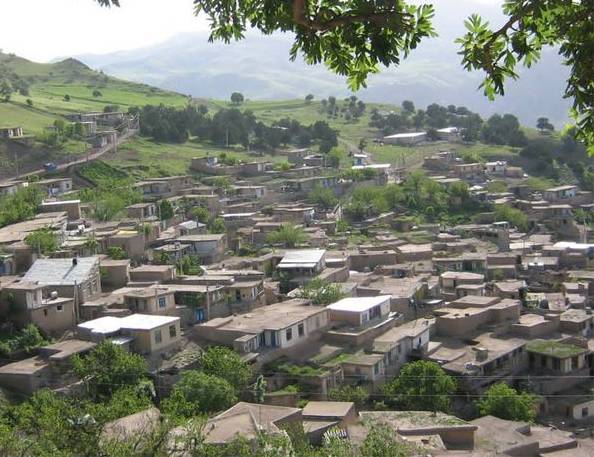
3.Mimand Village:
Mimand is a rocky village in the Mimand district of Shahrbabak county in the Kerman province of southeastern Iran. The village bears a resemblance to the Kendovan village in the Azerbaijani region, an astonishing place where humans and nature collaborated in its construction. “Kicheh” houses, cave-like structures, are built by the villagers inside the sedimentary rock formations. These sediments are so soft that, with the help of tools, they can be easily shaped, providing a sturdy and secure shelter under their roofs.
Mimand, a historic rocky village, has a history spanning thousands of years, undoubtedly counting as one of the earliest human settlements in Iran. The village of Mimand, nestled together, consists of 406 Kichehs and 2560 rooms. The villagers have unique customs and dialects, still incorporating words from Pahlavi Sasanian language into their speech. In 1384, Mimand was awarded the Melina Mercouri International Prize, given every two years for the interaction of art, culture, human, and nature. This village was inscribed on the UNESCO World Heritage List in 2015.

4.Oraman Takht Village:
Oraman Takht is situated in the southeast region of Marivan county, within the Kurdistan province. It is only 170 kilometers away from the provincial center, Sanandaj. This paradisiacal spot is nestled at an elevation of 1450 meters above sea level, experiencing moderate spring and summer weather and cold temperatures in autumn and winter. Oraman Takht is not only one of the most captivating mountainous areas in the Zagros but is also considered an extraordinary point in Iran. In the vicinity of this village, remnants of Zoroastrian fire temples have been discovered, indicating the people’s belief in the Zoroastrian religion before the advent of Islam. Presently, the residents of this village follow the Sunni denomination and speak the Horami dialect of the Kurdish language. One of the attractions of this village is the Piroshalyar House.
The name Oraman Takht is derived from two parts, “Ora” and “Man,” which, in literal translation, mean the land of Ahura. In the Avesta, “Ora” signifies the sun; hence, Oraman can also be interpreted as the land of the sun. Due to its location on a steep slope, the residential area of this village is dense and terraced, resembling Masuleh. In other words, the roof of each house forms the courtyard of another. The beauty of these structures, using predominantly stone and wood as building materials, complements the unique landscape. Despite its mountainous nature, the village is surrounded by lush and dense forests, creating a picturesque scene with tall trees. In this beautiful village, medicinal plants like Shirin Bayan and native beeswax can be found, and fruits such as pears, pomegranates, grapes, and figs add to the narrative of its charm.
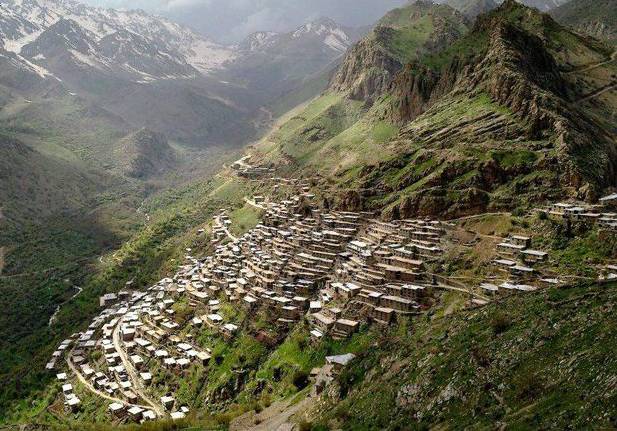
5.Evan Village:
Evan Village is located 80 kilometers from Qazvin and is considered one of the villages in the eastern Almut district. One of the reasons for the fame of this village is the presence of Evan Lake nearby. Evan Lake, situated close to the village, is a beautiful and appealing natural attraction. The primary occupations of the villagers in Evan include agriculture and animal husbandry, although recently some residents have shifted towards fish farming and providing services to tourists, such as guesthouses and restaurants.
6.Makhunik Village:
Makhunik Village is one of the astonishing villages globally and is renowned for its uniqueness as Lilliputians’ city. It is located approximately half an hour from Makhunik to Afghanistan, and the people of Makhunik are originally Afghans who migrated centuries ago and chose Makhunik for their living. This village is positioned 78 kilometers east of Sarbisheh city in the South Khorasan province, along the road from Sarbisheh to the Duruh village.
Makhunik has gained fame due to its distinct architecture, traditions, and culture of its people, earning the title of one of the seven wonders of the world. Makhunik is a village secluded in the mountains, in an area far from reach and where life has gone unnoticed by outsiders for centuries. In the past, this village had no external access, and in recent years, a part of the mountain has been cut to create a road for the village. The most significant feature of Makhunik is its ancient village structure, where humble brick and clay houses without courtyards, porches, windows, and chimneys have been built. Even after years, some residents still live in these houses.
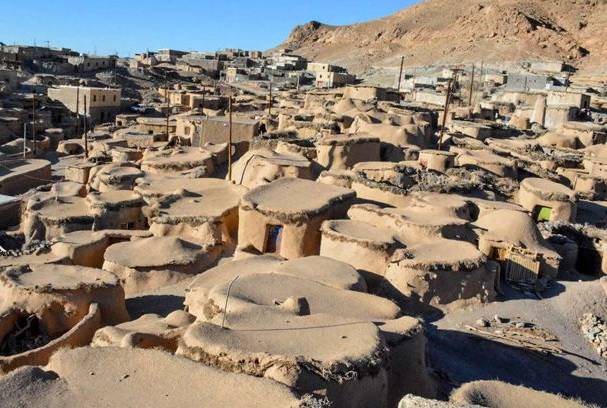
7.Kandovan Village:
Kandovan is one of the three rocky villages in the world and is considered one of the most beautiful tourist attractions in East Azerbaijan province. To learn more about this unique natural attraction, join us with Kajaro.
Kandovan Village is one of the beautiful and unique tourist attractions in East Azerbaijan province, gaining its major fame from houses shaped like beehives carved into the rocky cliffs.
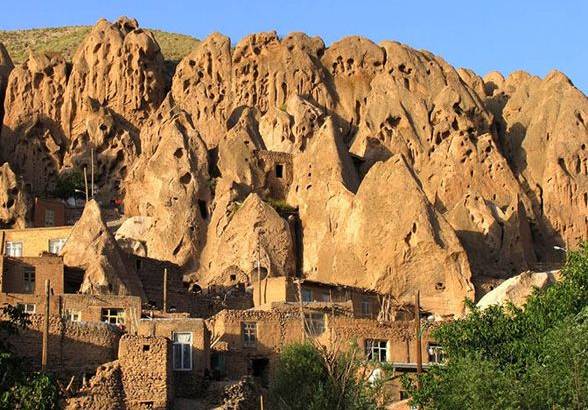
8.Baghche Joogh Village:
Due to its location and cool climate, Baghche Joogh Village attracts many tourists each year. In addition to these, Baghche Joogh Village has a magnificent historical palace dating back to the Qajar period, shining like a gem in this village.
If you travel from Maku towards the west and the border with Bazargan, after four kilometers, the beautiful mansion inside Baghche Joogh Village and its endless green gardens reveal themselves and invite you towards them. This village reaches the foothills of Charkhin Mountain and a spring named Keliseh. Charkhin Mountain, one of the highest peaks in the region with an altitude of nearly 2774 meters, provides an excellent opportunity for mountaineers to both explore the area and experience climbing. However, the mountain’s location requires the use of technical equipment for climbing during the cold seasons.
Baghche Joogh Village has a cool climate in the summer, and for this reason, many residents of Maku use this village as a summer resort due to its unique mountainous properties. Besides the water, the abundance of orchards and the presence of the Keliseh Church spring have created a pleasant and delightful atmosphere in Baghche Joogh Village.
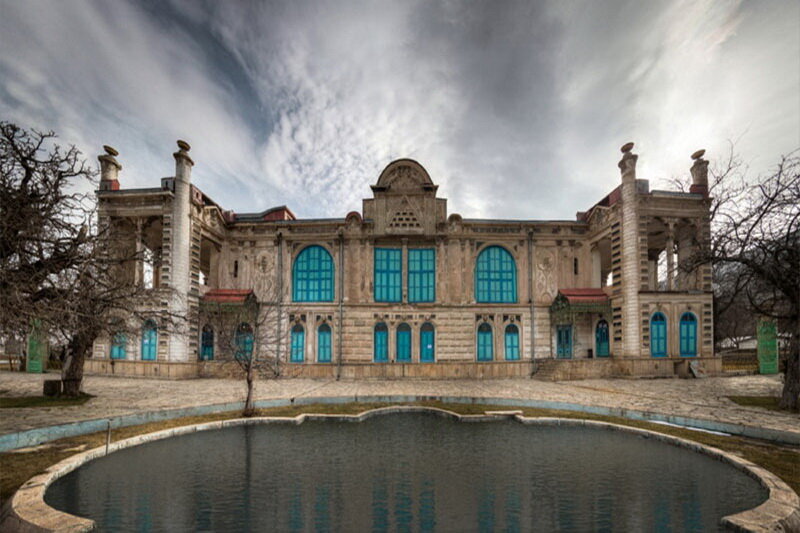
9.Hasanlu Village:
West Azerbaijan province has witnessed many historical artifacts, and one of the oldest is the Hasanlu Mound, a several-thousand-year-old hill that reflects the rich history of this region. To see this attraction, you must go to the city of Naqadeh, located southeast of Urmia, which has preserved valuable heritage from ancestors.
In the 95-kilometer distance southeast of Urmia, there is a historical city, Naqadeh, where one of its most important attractions is the Hasanlu Mound. This hill is located around the city and has valuable historical artifacts from Iran. Hasanlu, a large and circular hill with a diameter of 250 to 280 meters, is situated between the Hasanlu and Aminlu villages, and several other ancient hills are visible around it. According to archaeologists, the first inhabitants of this hill were a tribe called Manai. Settlement on this hill has occurred in ten different periods, with the tenth period being the oldest, starting around 6,000 years ago. The information about the ninth, eighth, and seventh periods is not abundant, while more information is available about the seventh to first periods, as more artifacts from these periods have been found on this hill. For example, gray pottery vessels discovered at this location belong to the fifth period of settlement and are believed to be structures made of mud and clay from the same period. One of the most important remains from the fourth period of settlement is the stone structures that provide a lot of information about that period. The third settlement period coincides with the rule of the Medes, and the second settlement period coincides with the Parthian period. The first period is contemporary with the late Sassanian and early Islamic periods, and today, no traces of that period are visible in Hasanlu; they have all been destroyed. One of the most important settlement periods on the hill is the fourth period, which mostly includes stone structures, and extensive studies have been conducted on them to this day.
10.Andbil Village:
Andbil Village is one of the major tourist centers in Azerbaijan, attracting tourists and nature lovers throughout all seasons for various reasons. This village has a rich historical background.
Located south of Ardabil city and 3 kilometers away from Khalkhal County, Andbil Village, like other surrounding areas, is surrounded by pristine and beautiful nature. Today, it has become one of Iran’s important tourist destinations. Andbil Village is one of the historical settlements in Azerbaijan, mentioned in many historical books.
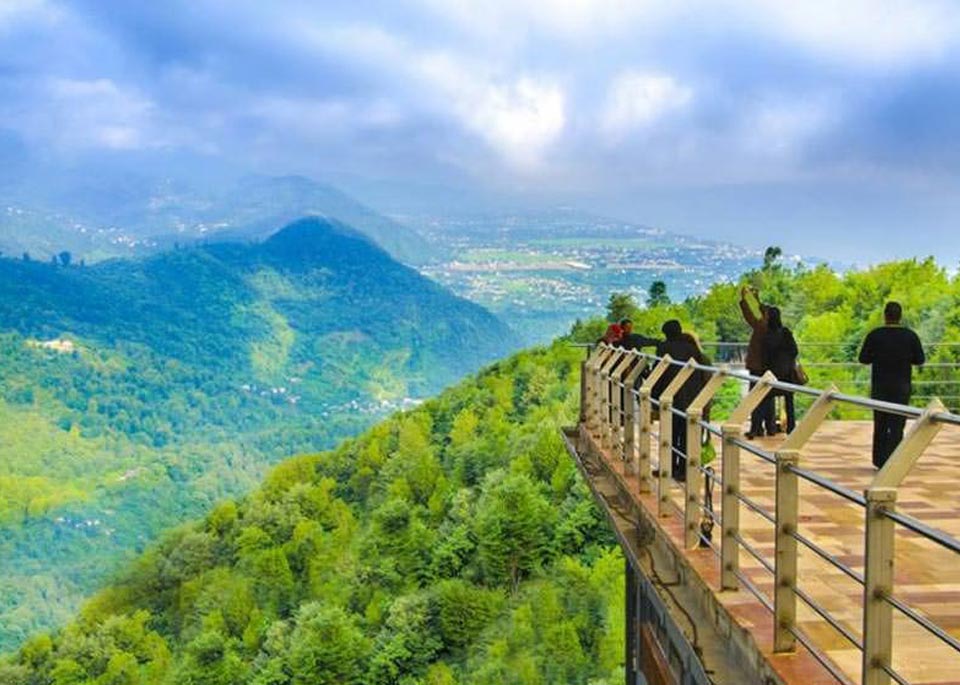
The mention of this beautiful village is evident in historical books from the 2nd and 3rd centuries AH (Islamic calendar), indicating the ancient history of Andbil. The presence of historical artifacts like the fire temple and Kofu Castle continues to testify to its ancient origins. The village has densely populated settlements at the base of the mountain, featuring narrow, intertwined alleys similar to the picturesque villages of Iran, with the sound of flowing water echoing through them.
The streets and alleys of Andbil are adorned with trees instead of smoke, crowds, and buildings, presenting a unique and delightful walking experience. The village has integrated well with its surrounding areas, with Shirvani houses and adobe walls confirming this claim. In this village, the blue sky is visible, and oak and maple forests and mountain ranges are within easy reach.
11.Abyaneh Village:
Situated 40 kilometers northwest of Natanz city, at the foothills of Karkas Mountain, Abyaneh Village stands out as one of the most exceptional villages in Iran due to its diverse historical monuments and structures.
Abyaneh is a picturesque and pleasant location with a favorable natural position and a historical background dating back four thousand years. During the Safavid era, when Safavid kings went to Natanz for leisure, many of their close associates and courtiers preferred to stay in this village. In the local dialect, Abyaneh is called “Viuna.” “Vi” means willow, and “Viyane” means willow land, referring to Abyaneh’s past as a willow land. Over time, Viuna became Oviyaneh and then Abyaneh.
The architectural structure of the village houses is in a spiral shape, dating back to the Seljuk, Safavid, and Qajar periods. Most houses are cube-shaped, constructed with wooden lattice doors and windows placed in a staggered manner on top of each other. The ancient structures of the village, covered with red soil, resemble dancing flames on the gray slopes like sparks on ashes when rain falls, creating a unique spectacle.

The people of Abyaneh speak Persian with a distinctive Abyaneh accent, significantly different from common accents in other regions. Wearing traditional costumes is still prevalent among the villagers, emphasizing the importance of preserving and showing off their heritage. Men wear wide and long black trousers, and women wear long, colorful, floral-patterned dresses. Additionally, Abyaneh women typically wear white headscarves.
12.Qarveh Village:
Qarveh Village is one of the villages in Zanjan province, with a history dating back 3,000 years, attracting many tourists each year.
Qarveh is a village built on a cohesive rocky structure, displaying a fascinating and unique landscape. This astonishing view is located near Abhar city in Zanjan province, showcasing a special structure that captivates viewers with its beauty.
This village possesses two notable features. Firstly, it has the Jameh Mosque of Qarveh, dating back to the Seljuk period, and the only remaining dome stands as the house of the dome. Secondly, the formation and construction of the village are not evidenced by any remains from its early establishment. The part of the village built on a unified rock appears entirely distinctive and remarkable. It seems that the history of this structure extends to more than 200 years.
13.Majargeshin Village:
Majargeshin (or Mirzanshin) is one of the villages in East Azerbaijan province, situated in the Ganbarof district of the central part of the city of Esco, approximately 65 kilometers from the major city of Tabriz. The current population of this village is around 1300 people.
Mount Oryan (Oryan Daghi) is the highest point in the village, with a peak elevation of 2850 meters. The name “Majargeshin” originally means “Mirzanshin” (Mirza’s abode), signifying a residence for Amirs and dignitaries.
One of the historical areas in the village is the historical cemetery of Majargeshin. In this cemetery, the tombstones have inscriptions in the Arabic language, indicating the prevalence of Arabic writing in ancient times in this village. This cemetery is one of the remnants from historical periods after Islam.
14.Kangloo Village:
Kangloo is a village in the central part of Savadkuh County in Mazandaran province, Iran. This mountainous and tourist village is home to Kangloo Castle, a historical castle dating back to the Sasanian era. The recreational area and Barardeh Spring are also part of the attractions in Kangloo Village.
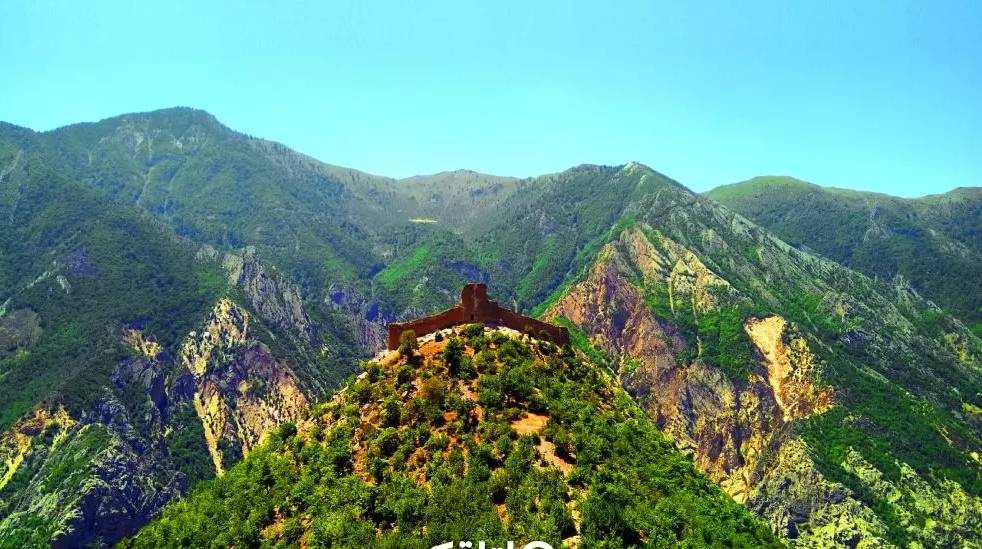
15.Vanayi Village:
Vanayi is a village in the central district of Borujerd County in Lorestan province, Iran. This village is located 12 kilometers northwest of Borujerd city in a mountainous region, nestled between two tall mountains, Balaafetab and Kuh-e Green, experiencing a mountainous climate. Its winters are cold and snowy, while summers are cool and moderate. South of Vanayi forms a small plain that, due to abundant water, thrives in agriculture. Numerous springs, such as Sefid Lake and Panbeh Spring, emerge from the foothills of the mountains in this area, serving as the primary source of drinking water for Borujerd city.
16.Varyan Village:
Varyan can be considered the Venice within the heart of the Karaj Dam. Varyan village in Karaj is one of the most beautiful and fascinating villages in this city, showcasing itself on the Karaj-Chalous road. The air purity in Varyan is indescribable because any entry of cars, motorcycles, or bicycles is prohibited.
Varyan can be regarded as one of the tourist hubs of Alborz province, attracting many tourists from the surrounding areas every year. This village is located east of the Amir Kabir Dam and 25 kilometers from the beautiful and eye-catching Chalous road.
17.Khamat Village:
Khamat is the name of an ancient village in the historical city of Shush, located 20 kilometers south of Andimeshk and 40 kilometers north of Shush. This village is populated by large Arab tribes, Bedouins, and Bahadori people, with a population of approximately 600 people. About a hundred years ago, one of the great Arab sheikhs in Khuzestan, named Khamat, chose this location for settling his descendants due to its suitable land for agriculture and raising sheep, cows, buffalo, and camels.
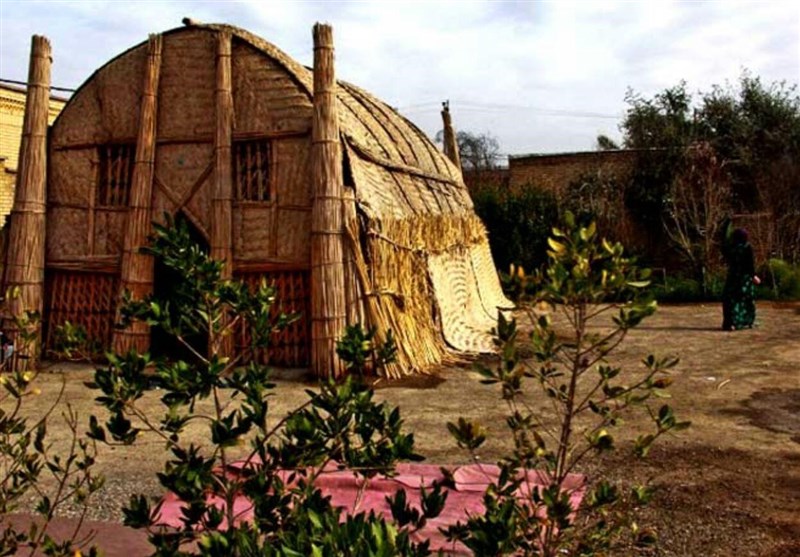
18.Sang Tarashan Village:
Sang Tarashan Village is situated near Khorramabad and within the vicinity of the waterfalls of Nojian and Varek, gaining fame as a stepped village with incredibly beautiful natural landscapes, attracting many tourists throughout the year. The valley below this village, after each rainfall, becomes filled with continuous masses of clouds. In a way, a unique seascape of clouds emerges downstream of the village, giving a special charm to the Sang Tarashan region, considered one of the rare natural phenomena in Iran.
What has brought Sang Tarashan Village to scientific forums is the discovery of an archaeological site in 2003 on the northern outskirts of this village, known as the “Patkht” site. This valuable site revealed well-preserved artifacts dating back to the Iron Age, considered one of the world’s most unique archaeological treasures. Some of the significant objects from the excavation of the “Patkht” site in Sang Tarashan are currently on display at the Felak Al-Aflak Castle Museum in Khorramabad, available for tourists to visit.
19.Kharanagh Village:
Kharanagh Village is considered one of the most valuable attractions in this border region due to its historical significance. It was mentioned for the first time in the reports of a Zoroastrian priest in the year 24 AH (Islamic calendar), coinciding with the twelfth year of the reign of Yazdegerd Sassanian. It served as a resting place for merchants and travelers. Interestingly, this village is even more famous in Europe than in Iran.
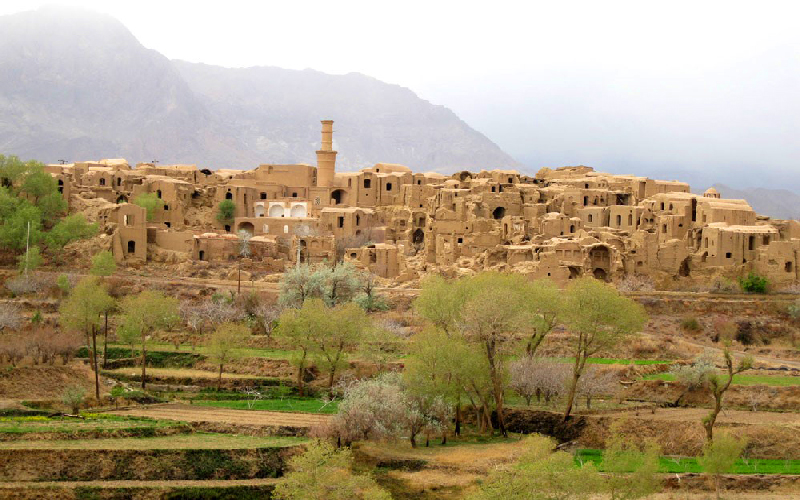
Attractions of this historical village include Kharanagh Caravanserai, Kharanagh Castle, Kharanagh Bath, Kharanagh Bridge, Minaret of Kharanagh, and the Jame Mosque and Hosseiniyeh of Kharanagh. This village is located north of Yazd city and 50 kilometers from Ardakan city.
20.Mazichal Village:
In the Mazandaran region of Kelardasht, there is a beautiful and religious village called Mazichal, known as one of the important destinations for tourists and nature lovers due to its unique location and beauty. This village is situated at an altitude of 2600 meters above sea level, offering a vast and breathtaking view from Ramsar to Chalous and the Mazandaran Sea. Imagine green forests and lovely white clouds embellishing the sky of the village during rainfall.
The presence of dense forests and delightful white clouds, which decorate the sky of the village during rain, has made the position and status of the village as a tourist destination excellent and unparalleled. The mountains and the arrangement of hills create clouds that are constantly changing shapes.
21.Varkaneh Village:
Varkaneh Village is located near Hamedan city in Hamedan province, Iran. The village, famous for its stone alleys surrounded by burnt sienna lights, evokes images reminiscent of the European Renaissance era. With a history dating back over 400 years, Varkaneh has the oldest neighborhood called Darb-e Masjed, and the residents speak both Persian and Lori languages.
This village, with its natural beauty and old houses, is the birthplace of Professor Tofigh Mossivand, the inventor of the world’s first artificial heart. Born in 1315 in Varkaneh, he worked as a shepherd to help his family until the age of 14.
22.Seroolat Village:
Seroolat Village is located 22 kilometers from Ramsar, near the city of Chaboksar. Positioned 3 kilometers south of Chaboksar along the Achiroud River, the village offers a stunning view of the Alborz Mountains. Seroolat provides a unique blend of mountain, forest, sea, and river, creating an atmosphere of tranquility and hospitality. The proximity of mountains, forests, sea, and river in this beautiful village enhances the joy and peace of visitors. The warm hospitality of the locals ensures that you never feel like a stranger. The combination of mountains, forests, sea, and river in this picturesque village multiplies the charms of traveling to Seroolat.
23.Tamin Village:
Tamin Village is the central village of the Tamin district in Zahedan County, located 65 kilometers southwest of Mirjaveh. It is one of the most beautiful villages situated in the northern part of the Tafatan Peak, higher than the charming and picturesque village of Ladiz. Tamin Village consists of three sections: Jash, Ropas, Tamin Bala, Tamin Markazi, and Tamin Payin, each located 300 meters apart.
In the summer, Tamin has a cool climate, while winters are cold, but overall, the village experiences moderate and pleasant weather in most seasons. The proximity to Tafatan Mountain and the presence of flowing springs contribute to the fertility and growth of various trees and fruits in the Tamin region.

24.Sirch Village:
Sirch, the birthplace of the renowned writer Houshang Moradi Kermani, is located 50 kilometers east of Kerman city and 30 kilometers from the Shahdad district. Sirch has historically been a summer resort for the warm and desert regions of Shahdad and its surrounding villages. This picturesque plateau, situated at an altitude of 1550 meters in a valley named after the river, has a population exceeding ten thousand during the summer due to its vantage point.
Sirch offers a beautiful landscape covered with dense masses of trees, including ancient cedar and plane trees. The central area of Sirch features several ancient cedar and plane trees. The moist and cool climate, along with the abundant flowing waters, has transformed some of the orchards in the Sirch region into marshlands. Various trees, such as pine, grape, fig, cherry, and plum, are planted in the hilly areas, and due to limited flat lands and abundant water, the cultivation of barley and wheat fields is scarce. Sirch is considered one of the main tourist attractions in the province.
25.Ladiz Village:
Ladiz Village is located in the Mirjaveh district of Zahedan County, 25 kilometers southwest of Mirjaveh and along the route from Mirjaveh to Tamin. This village is bordered by Shah Chenar Mountain to the south. Ladiz Village sits at an altitude of 1200 meters above sea level and has a warm and dry climate. The weather in the village is pleasant and delightful during the fall, winter, and early spring, while it becomes warm in the summers. The Ladiz River passes to the north of the village.
The people of Ladiz Village speak the Balochi language and are predominantly Muslim, following the Hanafi Sunni sect. Ladiz Village is situated in a vast plain with a dense residential structure. The village houses are mainly constructed with mud, clay, and wood, featuring flat roofs. Some houses are made of brick, iron, and plaster. Ladiz Village is surrounded by a vast and beautiful landscape, and the houses are built closely together.
26.Biaze Village:
Biaze village has been a significant communication route from the past to the present, being located on the Kerman to Yazd route. It is part of the central district of Anar County in Kerman province. The name “Biaze” means white, derived from the white cotton fields in the area.
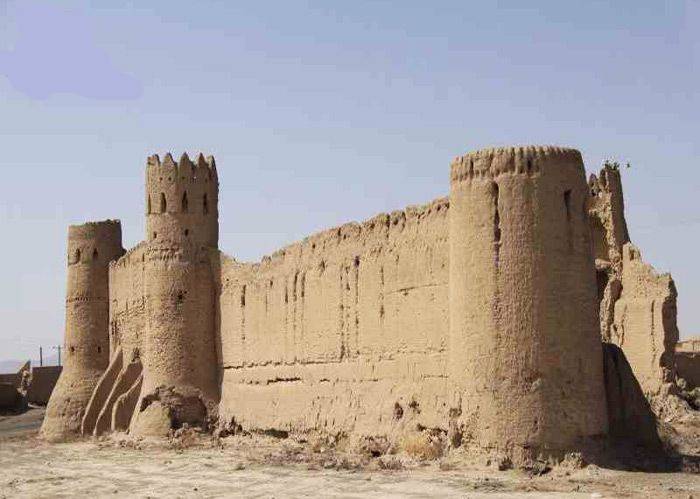
27.Masuleh Village:
Masuleh village is situated 26 kilometers southwest of Fuman city in Gilan province, with an elevation of approximately 1000 meters above sea level. The unique stepped architecture of Masuleh, where the roof of each house serves as the courtyard for the one above, combined with its lush and enchanting natural surroundings, creates a captivating and distinctive appearance. Nestled in the mountainous region of Talesh, Masuleh is adorned with the roaring Masuleh River and a scenic view of green forests and ancient trees.
28.Farsian Village:
Farsian village is located 22 kilometers east of Gorgan city in Golestan province. Situated in a mountainous area surrounded by towering oak trees, Farsian offers a breathtaking and picturesque setting. Farsian stands out among Iranian villages for its architectural and historical significance. It received approval for preservation and restoration by the Cultural Heritage, Handicrafts and Tourism Organization of Iran in 1979. The village’s unique layout, with narrow passages and walkways under the shade of roofs, has contributed to its reputation for promoting peace and tranquility among residents.
29.Ab Ask Village:
Ab Ask village is situated in the Larijan district of Amol in Mazandaran province. It belongs to the 18 villages of the Amol region, with the majority of its population residing in the Upper Larijan district. The village is known for attractions such as Ab Ask Springs, Ask Cave, and Imamzadeh Ali Lake. The warm mineral springs in the village are rich in minerals and sulfur, offering therapeutic benefits for various skin and joint conditions. The village’s natural beauty includes lush greenery, waterfalls, and the scenic landscape of the surrounding mountains.
30.Nusha Village:
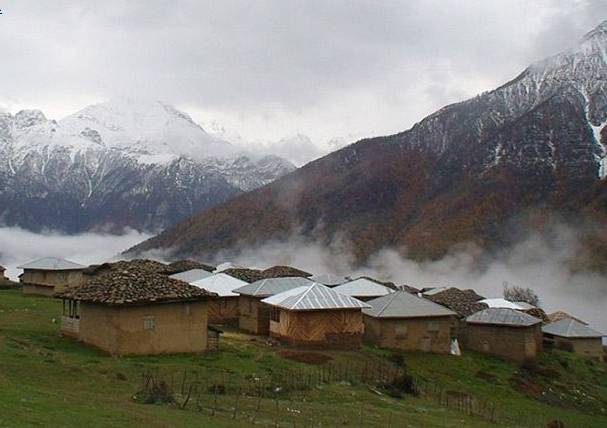
Nusha village is located 55 kilometers south of Tonekabon in Mazandaran province, forming part of the two thousand villages surrounding Tonekabon. This pristine and beautiful village is untouched by any vehicles except for occasional use of motorcycles and helicopters. The route to Nusha involves a combination of car travel and walking or horseback riding, as motorcycles and helicopters are infrequently used. The village’s history dates back approximately two thousand years, evident from historical and archaeological artifacts discovered in the area, including clay jars, ancient tiles, and agricultural tools. Notably, Nusha has preserved a bathhouse, colorful tile work, and a resting place for four-legged animals from the ancient rulers’ era, highlighting its historical significance.

